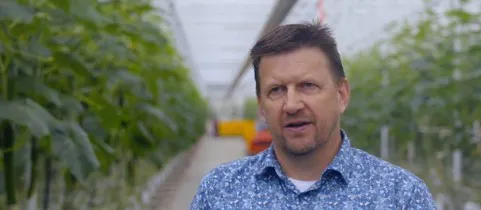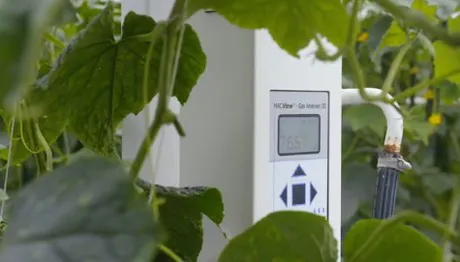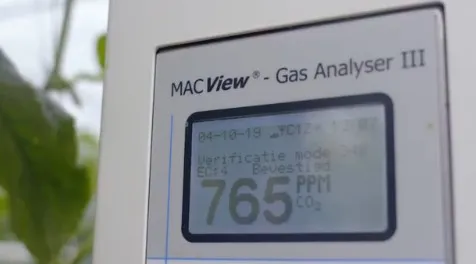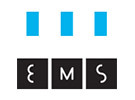Rino Kaljouw, cucumber grower from Sint-Annaland: "NOx and ethylene are like assassins which can do a lot of damage to my cucumber cultivation even at low concentrations". For this reason, he has installed a 'sniffing pole' between his crops, so he can monitor the greenhouse air 24/7 to be extra sure.

The sniffing pole Rino uses is the MACView Greenhouse Gas Analyzer. "It measures concentrations of NOx and ethylene on crop level, and the connection to my climate computer makes it possible to look back."
And that is quite useful. "Now I know, for example, that the start-up or less than optimal running of the engine of the co-generation plant can lead to an increase in concentrations."
Jan-Kees Boerman, Environmental Monitoring Systems (EMS), is the inventor of the sniffing pole, which can measure up to five different gasses at the moment, nitrogen dioxide (NO2), ethylene (C2H4), carbon monoxide (CO), carbon dioxide (CO2). "But at first we started with only measuring unwanted gasses. You're talking about ethylene, NO, NO2, and CO. CO2 has been added later on request of the growers, because it gave a good insight in the ratio between the wanted and unwanted part in smoke gasses."

Are all growers aware of the risks of the gasses in their greenhouse, particularly when the gasses come from unexpected external sources such as highways?
"No, certainly not, and that is certainly a point of attention. Growers are still not sufficiently aware of the risks and the impact on the cultivation. Particularly when it gets colder outside, and the windows close again, the growers are insufficiently aware of the increase in gas concentrations. Very simple: When ethylene concentration is too high, growers can expect effects or worse, damage to the crops. When NOx concentrations are too high, photosynthesis decreases and growers can expect reduces growth."
And do the urbanisation, concentrated horticulture areas and more, increase the dangers?
"Yes. If you had asked me a couple of years ago whether the outside air was an issue, I would have said no. Now I say wholeheartedly yes, with the fact that we see the effects on the crops on days with bad air quality."
When is the risk the highest? During winter, with extra heating, or during summer, when the roof windows are open again?
"Both have their risks: In the winter, you have accumulation. You can see the NOx concentrations increase at every CO2 dosing moment when the windows are closed. The concentrations then automatically reach a maximum value, or the effect limit value as we call it.

In the summer, you see that the set point of the CO2 dosing is never reached because the windows are always open. Risk is that then all CO2 is drawn along the plants. Between the CO2 outlet and the roof, there is a concentration gradient which makes sure that the bottom side of the plant is exposed to the highest concentrations, and when the high concentration fumes stream upwards along the plants, the concentration decreases. The fact is that the plant is continually taxed by these relative high concentrations."
Are there gasses in the greenhouse which cannot be measured right now, but which could offer opportunities in the future if growers were capable?
"Yes, with the changing composition of gas, a number of different components get our attention. I cannot tell anything about it. We first have to wait for the results of the ongoing research."
For more information: Environmental Monitoring Systems (EMS) B.V.
Environmental Monitoring Systems (EMS) B.V.
[email protected]
www.macview.nl
